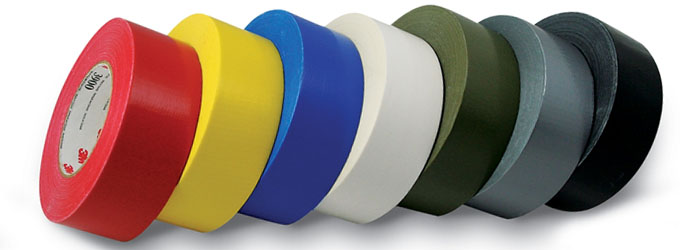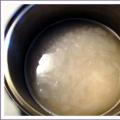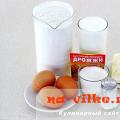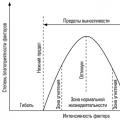There is hardly a person who does not know this material and has not used it at least once in his life. But oddly enough, even when dealing with it every day at work (electricians primarily), not many people know about its technical properties and characteristics. This is what we will talk about.
This dielectric material is a dielectric (insulating) material and is used in industrial, construction and household work for electrical insulation of wires and cables during repair and splicing of electrical cables with non-metallic sheaths operating in a static state. It provides tightness, protection from moisture, salts, weak solvents, ultraviolet rays, etc.
Currently, the most common types of electrical tape are: PVC and CB.
PVC electrical tape is an insulating material made on the basis of polyvinyl chloride. It has a standard type of tape roll, about 14-19 mm wide. A sticky coating of acrylic or rubber adhesive is applied to one side. These substances are non-toxic and therefore are absolutely harmless to human health.
As for her technical characteristics, so this is good elasticity and stretchability, stretchability, which is equal to 100-150%, high dielectric strength, resistance to temperatures ranging from -30 to +50 degrees, (meaning electrical tape of relatively good quality and those conditions in which it is pleasant to use work). Finds application both in production needs and in everyday life. In addition to being used in electrical work, it is also used for installation, fastening, fixing, packaging, etc. Example symbol for polyvinyl chloride tape with an adhesive layer 15 mm wide, 0.2 mm thick, blue, premium grade: PVC tape 15 x 0.20, blue, premium grade, GOST 16214-86.
The stickiness of the second grade tape is 2 times less than that of the first grade tape. For tapes with acrylic adhesives, the strength of the adhesive bond increases over time. For tapes with rubber adhesives, complete adhesion is achieved almost instantly.
PVC tape is an explosion-proof, non-flammable material; it undergoes a combustion process when an open flame is applied and extinguishes when it is removed from the flame. When burned, it releases harmful and toxic substances: carbon monoxide, vinyl chloride and tricresyl phosphate, etc.
As for the electrical insulating properties, it is designed to withstand breakdown voltages of up to 5000 volts, which is quite sufficient when used in industrial and household work (values up to 0.4 kV).
The tape should be stored indoors at temperatures environment from +5°C to +35°C, relative humidity no more than 80% and at a distance of at least one meter from heating devices. It is prohibited to store PVC insulating tape together with organic solvents, acids, chemicals, flammable and combustible liquids and other aggressive environments. Subject to the conditions of packaging, transportation and storage, the guaranteed shelf life is 10 years from the date of manufacture. Guaranteed shelf life in field conditions is 3 years from the date of manufacture.
This insulation tape has its advantages, it is very pleasant to work with (it winds well, has good hermetic and dielectric properties, does not smudge, stretch, etc.), but it also has one small drawback. She behaves poorly when high temperatures, namely, it melts and becomes unsuitable for its original purpose. In outdoor electrical installations, PVC tape is susceptible to frost, does not stick together and breaks, so it is not recommended to work with the tape at temperatures below 10°C.
Brightly colored electrical tape is convenient to use for marking wires and cable ends. With the help of catchy shades (red, yellow, orange), you can highlight the places where there are breaks, and they will immediately attract attention. If you need a color that best matches the surrounding materials, black, white, green, blue and purple electrical tape is available.

HB insulating tape is also very popular and widely used in practice. This type is an insulating black rubberized tape and is intended for electrical work in non-aggressive environments at temperatures from - 30°C to +30°C. This type of isolette is also called fabric and fabric, because. The tape itself contains cotton fiber. In the production of cotton insulating tape, factories use harsh calicoes, harsh calico, harsh galosh padding or other fabrics that do not impair the physical and mechanical properties of the tape, as well as rubber compounds manufactured according to technological documentation approved in the prescribed manner and reflected in the certificate.
At the moment, HB electrical tape is manufactured in two versions:
1 - one-sided (the adhesive rubber base is applied on one side of the tape);
2 - double-sided (the adhesive rubber base is applied on both sides).
According to GOST 2162-97 (former GOST 2162-78), cotton insulating tape is produced in the following grades:
for industrial use:
1 FLOOR - one-sided normal stickiness;
2 POL - double-sided normal stickiness;
2 PPL - double-sided with increased stickiness;
for wide application:
1 SHOL - one-sided normal stickiness;
2 SHOL - double-sided with regular stickiness.
An example of marking (symbol) of double-sided non-wide electrical tape for industrial use with increased stickiness, 20 mm wide: 2 PPL - 20 GOST 2162-97
Dielectric and insulating properties are limited to 1000 volts. For storage, the most favorable conditions will be dry rooms with temperatures from 0 to +24 degrees.
HB type tape should be stored in closed warehouses at an ambient temperature of 0°C to +25°C at a distance of at least one meter from heating devices.
It is allowed to store cotton insulating tape at subzero temperatures (up to - 30°C). In this case, before use, the CB tape must be kept at a temperature of +23°C ± 5°C for at least 24 hours. If the cotton tape meets the requirements of GOST 2162-97, as well as subject to the conditions of packaging, transportation and storage, the guaranteed shelf life is 12 months from the date of manufacture.
HB insulating tape should be used when working on electrical insulation in rooms (only not with high humidity). This type of insulating tape has the advantage that it is more resistant to heating the conductor. It can be used at low temperatures, when heated it sinteres and does not elongate, it hardens when aged, and has great abrasive resistance. Initially, due to the fact that it is rubberized, its use is similar to PVC, but if this electrical tape is fired, then as a result it loses some qualities, but other qualities appear. Suppose we need to insulate the bare ends of the wire in a place where it is relatively hot (about 150 degrees), simple PVC insulating tape will simply melt, and if we wrap it in cotton wool, then first there will be a natural burning of this area of winding of this insulating tape (that is, combustion of the existing rubber and material). As a result, a hard coating is formed at the winding site, which can protect against direct short-circuiting of exposed areas with other conductive parts. Although, this place is no longer resistant to high voltage. This may well be useful for use in some heating devices with electric heating elements. The disadvantages of this electrical tape are that over the years it loses its water-repellent properties and rots. The solution is to tightly wrap several layers of vinyl tape over the fabric. However, the developments of leading enterprises in terms of thermal stability have already surpassed their “rag” counterpart.
For example, fiberglass tapes have the highest heat resistance. Excellent absorption of resins and varnishes makes these tapes unrivaled for fastening and fixing applications at operating temperatures up to 200°C. Tapes based on polyester, polyimide, polytetrafluoroethylene (PTFE) and epoxy films also have good heat resistance.
Where special mechanical strength is required, glass fiber reinforced tapes are well suited. They are characterized by extremely low elongation, high tensile strength and puncture resistance. Paper tapes have good shock-absorbing properties, puncture resistance and impact resistance.
If high dielectric strength is critical, tapes based on polyimide or multilayer (composite) film are recommended. Acetate fabric tapes are aesthetically pleasing and provide excellent elasticity in applications such as transformer coil wrapping. They also perfectly absorb electrical insulating resins and varnishes and can be used at operating temperatures up to 105°C.
Polyester film based tapes are designed for insulating parts that require thin but strong and durable tapes. They have excellent puncture and abrasion resistance, resistance to chemicals, solvents, and moisture.
Epoxy tapes are a versatile option when you need flexibility, wear resistance and heat resistance at the same time. The tapes can withstand operating temperatures up to 155°C and are UL recognized as flame retardant. Their dielectric strength is also very high. The versatility of tapes based on this will help reduce the range of tapes used in production. The adhesives used in the tapes also vary. Electrical tapes use rubber, acrylic and silicone thermoactive adhesives. Thermal activity of an adhesive means that when exposed to high temperatures for a certain period of time (the hot cure cycle), the adhesive changes its properties, ultimately gaining higher characteristics in adhesive strength, solvent resistance and heat resistance. Although heat curing is not necessary (the tape already has sufficient initial adhesion for many types of applications), it significantly improves the properties of the tapes and is recommended for some processes.
The correct selection of electrical tapes suitable for a specific process is an integral part of efficient production. But it is equally important to be sure that you are purchasing a truly high-quality product. Therefore, you need to choose a manufacturer who is guaranteed to provide a constant level of quality for their products.
How to use insulating tape
In order for the insulating tape to perform its intended functions, it must be applied (wound) correctly. Bare areas of live parts and conductors should be insulated with at least three layers of tape. The width of the layer superimposed on the other should be slightly less than the width of the tape. Insulating tape is applied starting from the thin end of the product to the thicker one. If you insulate wires using insulating tape, be sure to wind them with a margin so that it extends beyond the twist. Carefully insulate the exposed sections of the wire, covering the cut area of the cable insulation. If you are using insulating PVC tape, do not pull it when winding, as this affects its characteristics: the thickness and width decrease, and the properties decrease. Be sure to secure the end of the insulating tape by making two to three additional turns at the end of the winding.
PVC insulating tape is not recommended to be applied to silicone coatings and fluoropolymers. When applied to easily deteriorating, delaminating, crumbling materials (fibreboards, untreated wood, concrete), preliminary treatment (priming) of the surface using primer materials is necessary. The surface areas to which the tape is applied must be dried and cleaned of dust and dirt.
HB insulating tape. HB insulating tape.
Basic information.
Subject— HB insulating tape. HB insulating tape. Basic information.
Nowadays, it is difficult to find a person who has not dealt with electrical tape (insulating tape), and also has not used it in practice at least once in his life. But not every electrician knows about its typical characteristics and basic technical properties. In this topic (HB insulating tape HB insulating tape Basic Information) I want to talk to you about exactly this.
Dielectric insulating tape (or electrical tape) is a consumable material, the main purpose of which is to provide good, sealed, reliable insulation of electrically unsafe parts (current-carrying) from external factors (moisture, sunlight, weak salt solutions, solvents).
When insulating tape is directly used in the electrical field, it is an excellent remedy high-quality insulation of electrical bare current-carrying conductors (cables, wires, tires) from accidental human contact with them or short circuit of conductors with each other (probability of short circuit).
The most used types of insulating tape are 2 main types: PVC-based insulating tape (polyvinyl chloride) and CB-based insulating tape (cotton). Various electricians, perhaps without suspecting it themselves, prefer one of these types (PVC is used more), but CB also has its best sides.
CB insulating tape (cotton insulating tape) is quite common in practice and is widely used for insulation. It is a rubberized cotton tape that has one or two adhesive sides. HB insulating tape is made from the following materials: calico/calico, galosh padding or similar raw materials. Temperature restrictions for it will be a temperature range of -30 and +30 degrees Celsius. The dielectric properties of CB insulating tape are limited to voltages up to 1000 V. It is better to store it in dry places with a temperature of 0 to +24 degrees.
Practical application: HB insulating tape has such good quality that it can be used in rather hot work places. Initially, since CB electrical tape is rubberized, its use is similar to PVC electrical tape, but if it is fired, then eventually some qualities disappear and other qualities appear. Let's say we need to insulate the exposed parts of the wire in places where there is elevated temperature(about 150 degrees). PVC insulating tape will simply begin to melt, and if you use CB insulating tape, then first the winding area of this insulating tape will be burned (that is, the existing rubber and CB material will burn).
The result will be the formation of a hard coating at the winding site, which can quite well protect bare areas with adjacent current-carrying parts from direct short circuits. This place where the burnt CB electrical tape is wound is no longer resistant to high voltage. But it can be used in heating devices up to 36V.
In some cases, there is a great need to wind an insulating layer on the exposed conductive parts of the electrical system, without having the usual CB or PVC insulating tape. From the point of view of general electrical safety rules, this is very wrong and bad, but in certain situations this can be neglected, thereby wrapping several layers of ordinary tape over the exposed wire. This will be better than leaving unprotected (bare) places completely.
Although today the most the best way is the use of WAGO terminal blocks; many electricians, even experienced ones, use twisting in electrical work. Such a connection is insulated, of course, with a special tape, which comes in any color, but mostly black, red or blue. Next we will put it up for discussion and talk a little about which insulating tape is better for electrical wiring - PVC or CB?
Properties Overview
So, first, let's look at the properties of cotton insulating tape (CT). The main advantage of such insulating tape is that it does not melt when the wire heats up and can withstand mechanical loads and is not damaged at sub-zero temperatures. In addition, an important advantage of the product can be considered increased wear resistance - it is difficult to wipe off during operation. As for the disadvantages of CB electrical tape, the main one is the poor tightness of the material. It cannot be used in rooms with high humidity or outdoors. In addition, cotton fabric does not stretch and can withstand a breakdown voltage of no more than 1000 Volts.
As for the polyvinyl chloride analogue, the material has increased resistance to moisture, has good stretch and can withstand breakdown voltages of up to 5000 Volts (better than the analogue). The main disadvantage of PVC electrical tape is the fact that it is not heat-resistant, because... melts at high temperature. According to the technical characteristics of the product, the maximum operating temperature should not exceed +70 °C (GOST 16214-86). In addition, plastic insulating tape breaks in the cold and loses its adhesiveness.

We’ve sorted out the properties of rag and plastic insulating tape, now let’s discuss which one is better to use for home electrical wiring - rag or plastic.
Which option should you prefer?
Since cotton fabric tolerates high temperatures better, but is afraid of humidity, it is best used indoors: at home, apartments, etc. In the past, cotton insulation tape was used in junction boxes because poor wire connections will heat up over time, and this insulation will not melt and prevent .

PVC products are best used for electrical wiring outdoors and in rooms with high humidity. In addition, you can insulate the wires from the chandelier with plastic insulating tape, as well as in other places where there will be no strong heating of the wires.
In a car, for reasons of accuracy, rag insulating tape is often used, because... it is black and does not catch the eye when the hood is opened. To make this insulation airtight, heat shrink tubing is placed over the cotton fabric.

Well, experienced electricians, in order to “kill two birds with one stone,” first insulate the wires with black cotton tape, after which they additionally wrap several layers of PVC products. In this case, the wiring will be protected from short circuits, because the insulation will not melt, and from high humidity.
By the way, the most the best manufacturers companies such as ISOLOCK, TDM ELECTRIC and Klebebander are considered electrical tapes. In most cases, professionals leave only positive reviews about companies' products. You can also choose cheaper, but still high-quality insulating tape from IEK for wiring in the house! Additionally, we recommend watching a video that compares the quality of several manufacturers of insulating tapes.
Topic: general information about insulating tape, PVC and cotton tape.
This topic is some a brief overview such well-known things as electrical tape. There is hardly a person who has not seen this material and has not used it at least once in his life. But oddly enough, even when dealing with it every day at work (this is, of course, electricians in the first place), not many people know about its technical properties and characteristics. This will be discussed in the article.
Insulating tape(insulating tape) is a consumable material, the main purpose of which is primarily to provide hermetically sealed insulation of objects and parts from certain environmental factors, such as sunlight, moisture, weak salt solutions and solvents.
And from an electrical point of view, this is to ensure electrical insulation of bare conductors (wires, cables, tires, etc.) and conductive parts from accidental human touch or contact with each other (to prevent the possible possibility of an electrical short circuit).
As you know, the most common types of such insulating tape in everyday life are two types: PVC-based insulating tape and CBD insulating tape. Perhaps without even knowing it, every electrician prefers one of them (mostly PVC), but the second also has strengths. And now about this in more detail.
PVC insulating tape.
PVC electrical tape(insulating tape) is an insulating material made on the basis of Polyvinyl chloride. It has a standard type of tape roll, about 14-19 mm wide. A sticky coating of acrylic or rubber adhesive is applied to one side. These substances are non-toxic and therefore are absolutely harmless to human health.
As for its technical characteristics, it has good resistance to various temperatures ranging from -30 to +50 degrees (I mean electrical tape of relatively good quality and those conditions in which it is still pleasant to work with). Also here it should be said about such quality as stretchability, which is 100-150%. This property, in turn, significantly affects the quality of the winding and the impermeability during its use.
As for the electrical insulating properties, it is designed to withstand a breakdown voltage of up to 5000 volts, which is quite sufficient for use in home and industrial work (up to 0.4 kV). To preserve its qualities, electrical tape PVC It is recommended to store in dry, not aggressive environments, at ambient temperatures from +5 to +35 degrees.
And now about practical use: this insulating tape is good, first of all, because it is very pleasant to work with (it winds well, has good sealing and dielectric properties, does not smear, stretches, etc.), but it also has one small flaw. It does not perform well at high temperatures, namely it melts and becomes unsuitable for its original purpose.
HB insulating tape.
HB electrical tape, is very popular and widely used in practice. This is a rubberized cotton tape with one or two adhesive surfaces. It is made from a material such as calico/calico, galosh padding or similar raw materials.
 The temperature limits for it will be the range from -30 to +30 degrees. Dielectric and insulating properties are limited to 1000 volts. For storage, the most favorable conditions will be dry rooms with temperatures from 0 to +24 degrees.
The temperature limits for it will be the range from -30 to +30 degrees. Dielectric and insulating properties are limited to 1000 volts. For storage, the most favorable conditions will be dry rooms with temperatures from 0 to +24 degrees.
Regarding practical use: this type of insulating tape has the advantage of being used in very hot and hot places. Initially, due to the fact that it is rubberized, its use is similar to PVC, but if this electrical tape is fired, then as a result it loses some qualities, but other qualities appear. Suppose we need to insulate the bare ends of the wire in a place where it is relatively hot (about 150 degrees), simple PVC insulating tape will simply melt, and if we wrap it in cotton wool, then first there will be a natural burning of this area of winding of this insulating tape (that is, combustion of the existing rubber and material).
As a result, a hard coating is formed at the winding site, which can protect against direct short-circuiting of exposed areas with other conductive parts. Although, this place is no longer resistant to high voltage. This may well be useful for use in heating devices with electric heating elements, as well as in areas close to furnaces. Since in similar electrical circuits low voltages are used (up to 36 volts).
Ordinary tape as an insulating material.
 Sometimes there is an urgent need to wind insulation on bare wires and conductive areas, without having simple PVC or cotton tape on hand. From the point of view of electrical safety, this is of course very bad and incorrect, but in some cases this can be neglected by wrapping several layers of tape for the purpose of insulation, since this method will be better than leaving dangerous electrically exposed (bare) places not at all protected from accidental touch.
Sometimes there is an urgent need to wind insulation on bare wires and conductive areas, without having simple PVC or cotton tape on hand. From the point of view of electrical safety, this is of course very bad and incorrect, but in some cases this can be neglected by wrapping several layers of tape for the purpose of insulation, since this method will be better than leaving dangerous electrically exposed (bare) places not at all protected from accidental touch.
P.S. The use of electrical tape is not limited to electrical installations. This clever product is one of those things that, with its primitive design (a strip of tape coated with glue), can be used in a huge number of different areas of work, thereby proving its high significance.
PVC (polyvinyl chloride) insulating tape is made on the basis of polyvinyl chloride insulating plastic compound. An adhesive layer is applied to one side of the film. PVC insulating tape is available in different colors.
Insulating tape HB (cotton) GOST 2162-97 grade 2 POL is made on the basis of cotton fabric. The rubber mixture (glue) is applied to 2 sides of the fabric.
Ordering information: products presented in this group may have different units of measurement, which is reflected in the “Unit” column. change." When ordering, the quantity of goods is adjusted according to the minimum batch and quantity in the package.
You can pick up and pay for the goods without pre-ordering at the address: 140000 Moscow region,
Lyubertsy, st. Kotelnicheskaya, 15 V. Opening hours: weekdays from 8-30 to 17-00.




